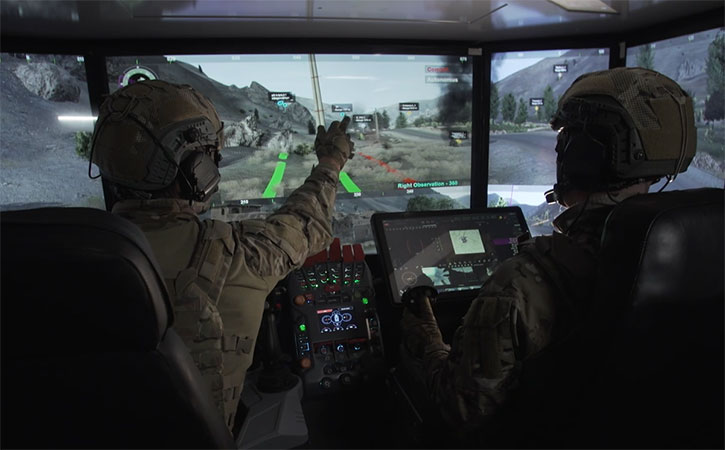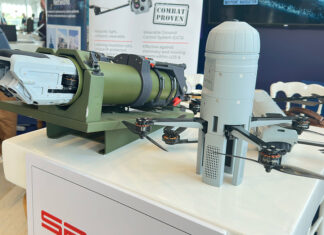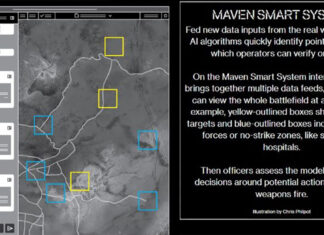Israel’s Ministry of Defense (IMOD) has signed a contract with Rafael Advanced Defense Systems to implement the ‘Fire Weaver’ – a multi-domain networked sensor-to-shooter system with Israel Defense Forces (IDF) brigades. Fire Weaver, locally known as ‘smart trigger’ was demonstrated in 2018 at a battalion level exercise. In the next two years, the system will undergo full-scale development and is scheduled to become operational with the first brigade in 2022. In the future, they will become the standard connecting all sensors and shooters operated by the IDF. As such, both legacy and new systems will be connected will be ‘Fire Weaver enabled’.
Fire Weaver was designed to perform in multiple engagements in high-intensity combat as well as in the urban environment in asymmetric warfare, where it enables combat elements to engage enemy targets faster in seconds, rather than minutes. This capability enables small forces to deliver firepower against the ‘disappearing targets’ that are characteristic in today’s asymmetric battlespace.
Fire Weaver was developed by the IDF’s ground forces command, IMOD’s Directorate of Defense Research and Development (DDR&D) and Rafael, under the IDF’s battlefield digitization process. The system connects the combat maneuver elements with the effectors participating in the land battle, creating a ‘fires exchange’, where units in contact with the enemy can ‘publish’ a tender – a call for fire specifying the exact target location. The tender is instantly distributed to the fire elements, based on ‘bids’ of each effector, positioned within range, ready to fire, within the safety limits, in the shortest time and the lowest cost.
Fire Weaver acts as an exchange connecting the most efficient response to the call for fire, by closing a rapid, precise, effective and secure sensor-to-shooter loop. The system also processes all options against different rules and restrictions – including safety limits, keep-out zones, rules of engagement or legal aspects. Fire Weaver can process multiple requests and multiple fires simultaneously, introducing new levels of efficiency and response.


An essential capability of Fire Weaver is the GPS-independent geo-pixel-based tactical common language developed נט Rafael. The Geo-Pixel designates a location on a 3D model and using computer vision technology to present that location viewed from different angles. With target designated by 3D Geo-Pixels shared among all the sensors and shooters participating in the system, the language ensures safe and secure exchange of spatial information, enabling users to share target information and common situational picture from different lines of sight.
Fire Weaver enables participants to share targets, blue forces, sensitive locations and other points of interest. Their location and status are shown as an augmented display on the sights or battle management systems. Since the system only transfers the target geo-pixel and metadata, its bandwidth requirements are lower than systems relying on images, video, and speech.
Fire Weaver employs advanced artificial intelligence algorithms to process the battle data in real-time, analyze it, and prioritize fire allocation based on availability, priorities, and requirements. The system constantly calculates the optimal shooter for each target, based on parameters such as location, line-of-sight, effectiveness, current ammunition status, etc., while minimizing collateral damage and fratricide, taking into consideration the rules of engagement in real-time.

“Fire Weaver is a main milestone in the IDF’s battlefield digitization effort.” Lieutenant Colonel R, Project Leader at MAFAT commented. “The innovative system essentially creates an ‘operational internet’ and brings to the battlefield the same innovation that the internet brought to the civilian world, the smart home and the smart cities. Fire Weaver enables operational connectivity between Joint forces and simplifies integration processes between naval, air and ground forces”.
The system includes a Fire Management Terminal application, which provides the commander with full control of the entire process, including cases of multiple sensor-to-shooter loops in parallel.
As Fire Weaver is complementary to any C4I system, it will be employed by the IDF with the ‘digital army program’ (DAP) implemented by Elbit Systems. In contrast to such C4I systems, that are designed for operations at headquarters, and the command level, the new Fire Weaver is implemented at battalion level and below, empowering the combat echelon by providing more effective firepower support to the fighting units. Fire Weaver edge elements are associated with each effector and combat unit, embedded in the binoculars, target acquisition spotting and weapon sights. Targets and calls for fires are displayed directly on the battle management and fire controls of fire support elements, reducing the risk of friendly fire and prevents collateral damage. Fire Weaver is designed with full compliance with the MIL-STD 882 safety standard.
In addition to the IDF, the system has been selected by the German Federal Office for Equipment, Information Technology and Use of the Federal Armed Forces (BAAINBw), to provide advanced experimentation as part of the “glass battlefield to support dynamic operations (ErzUntGlas)”.




















